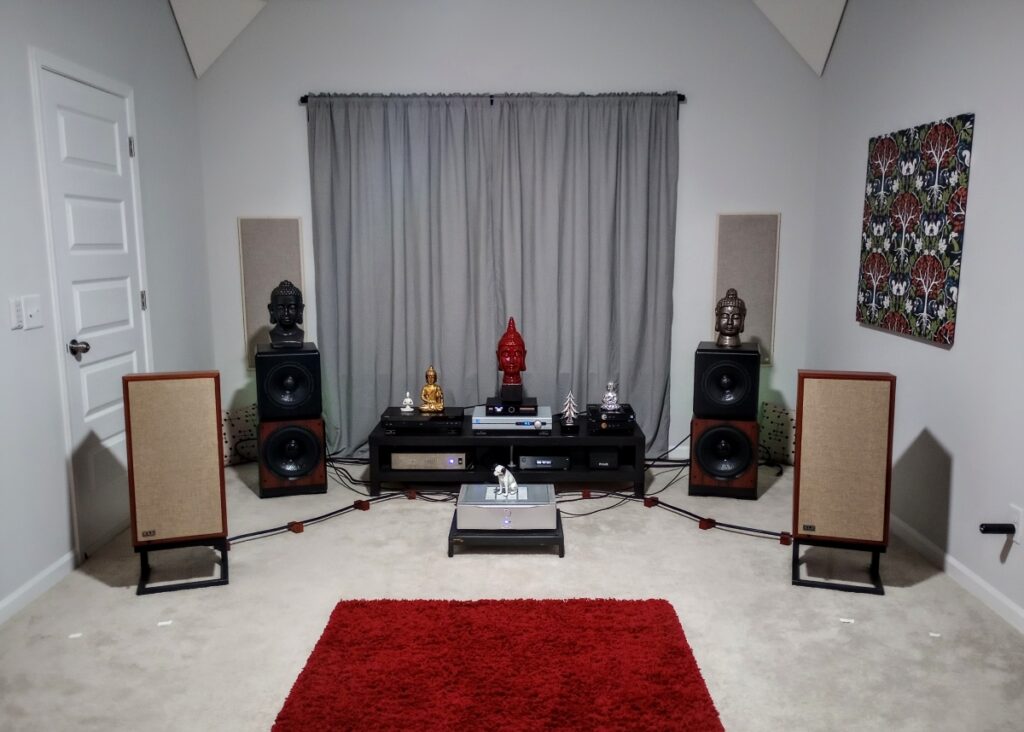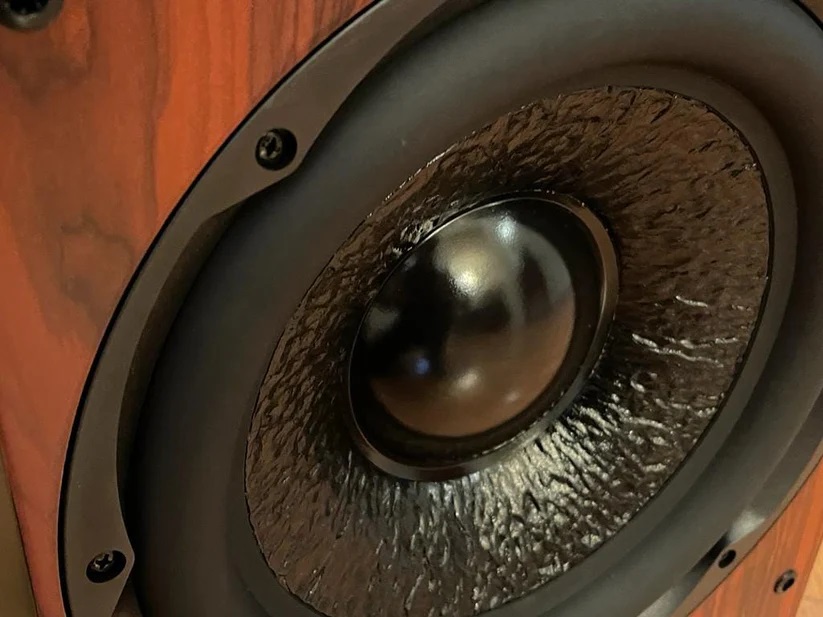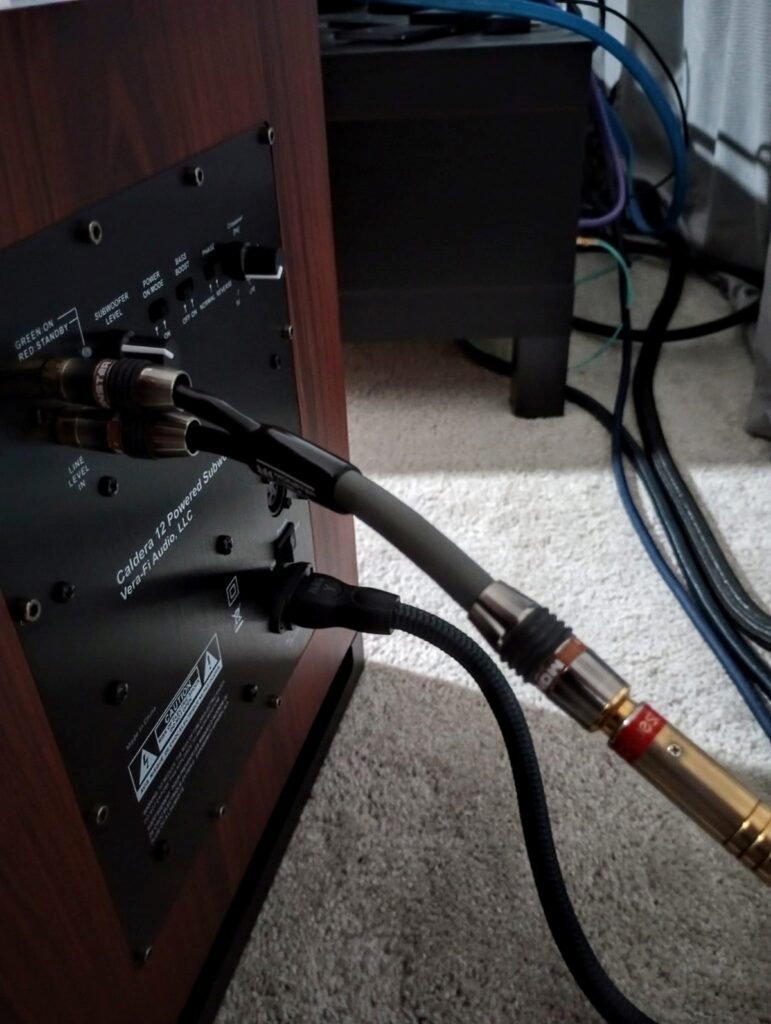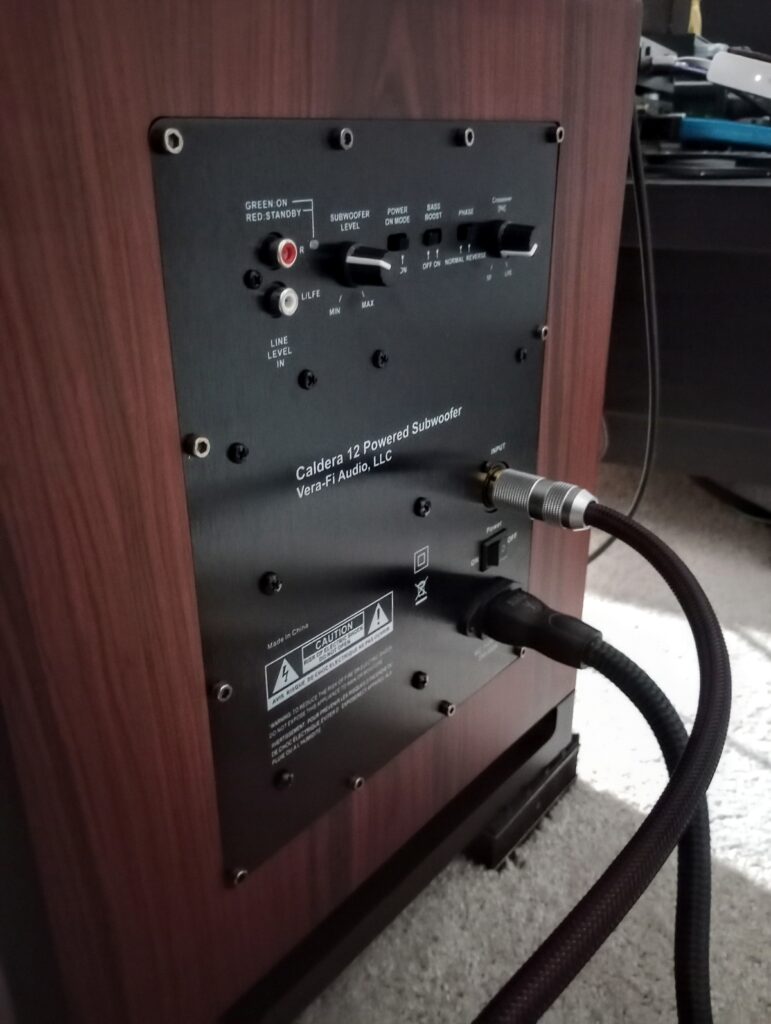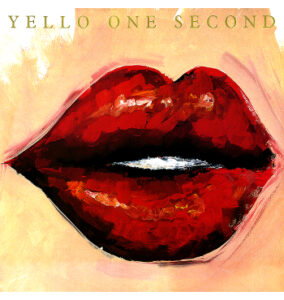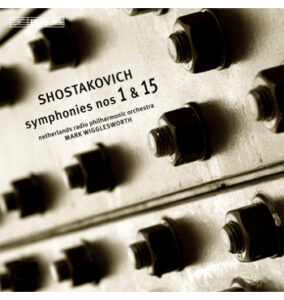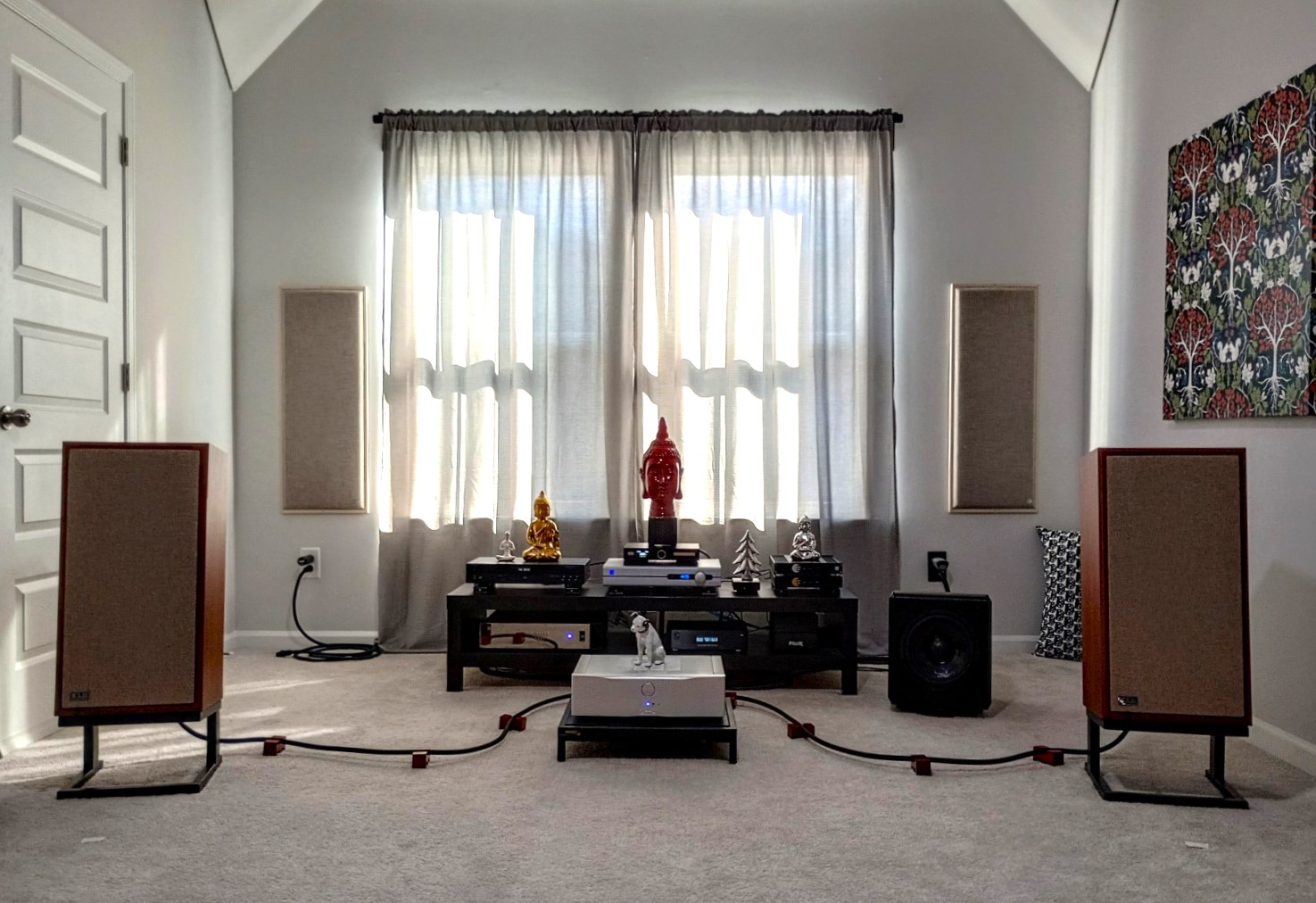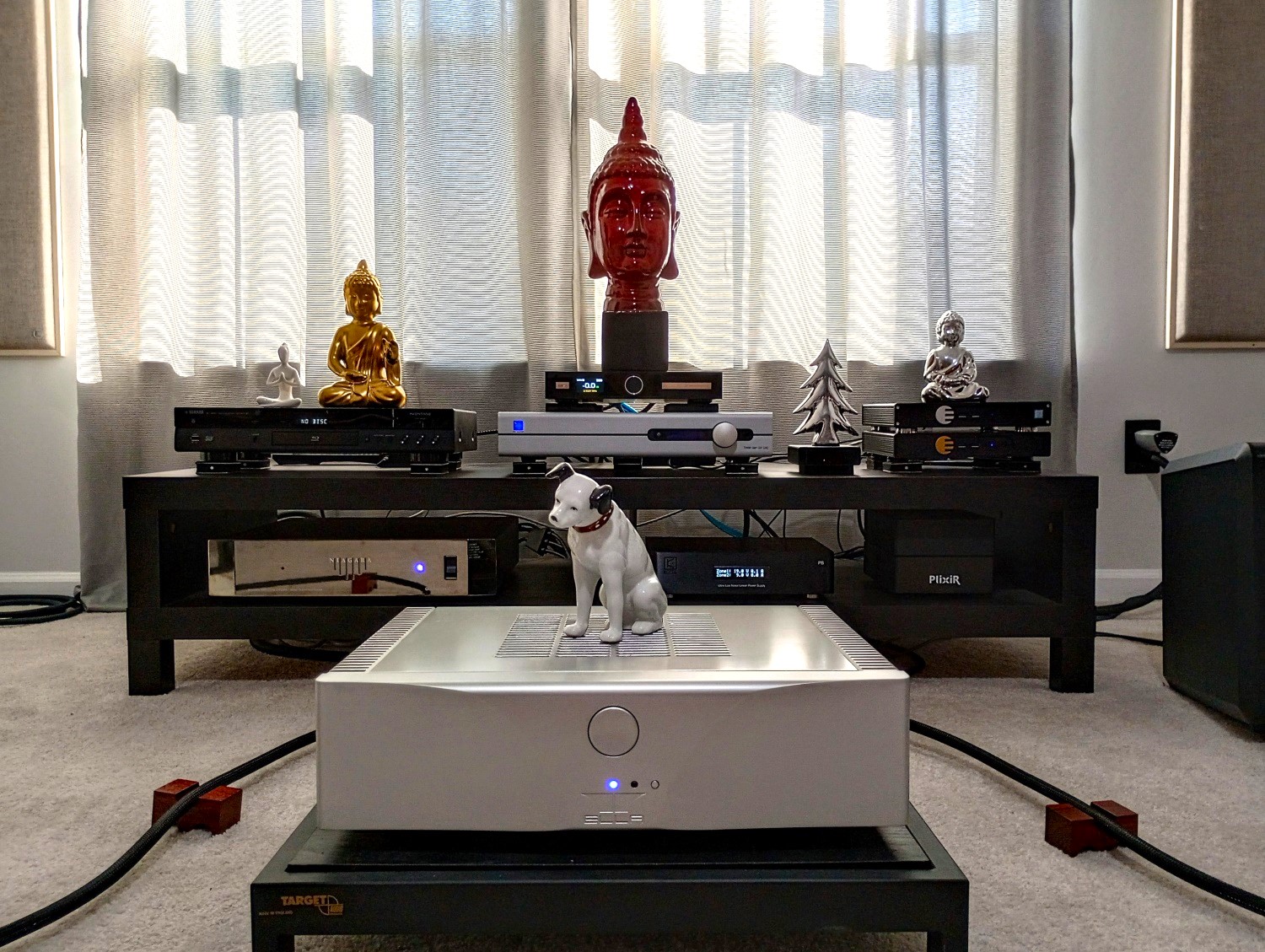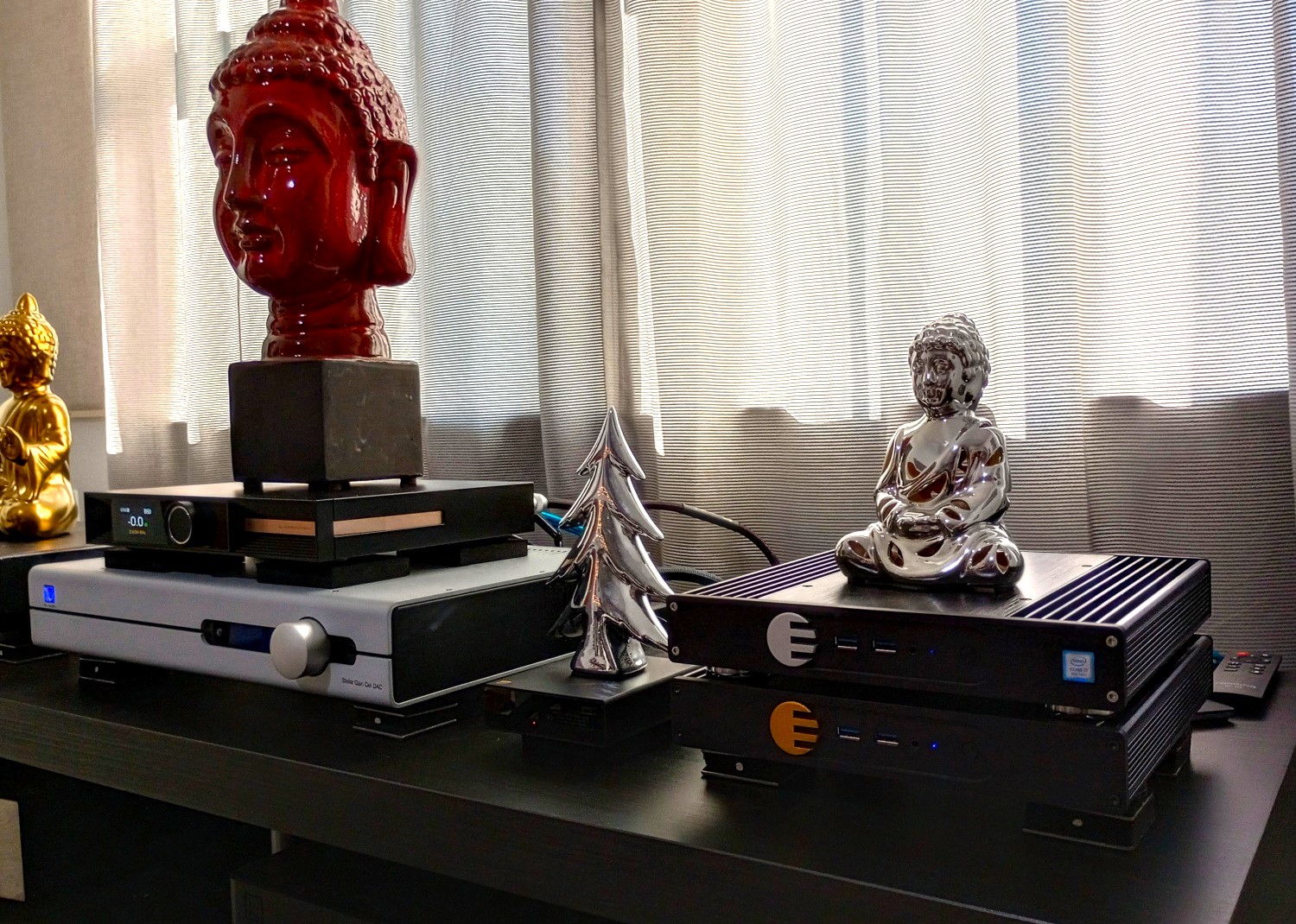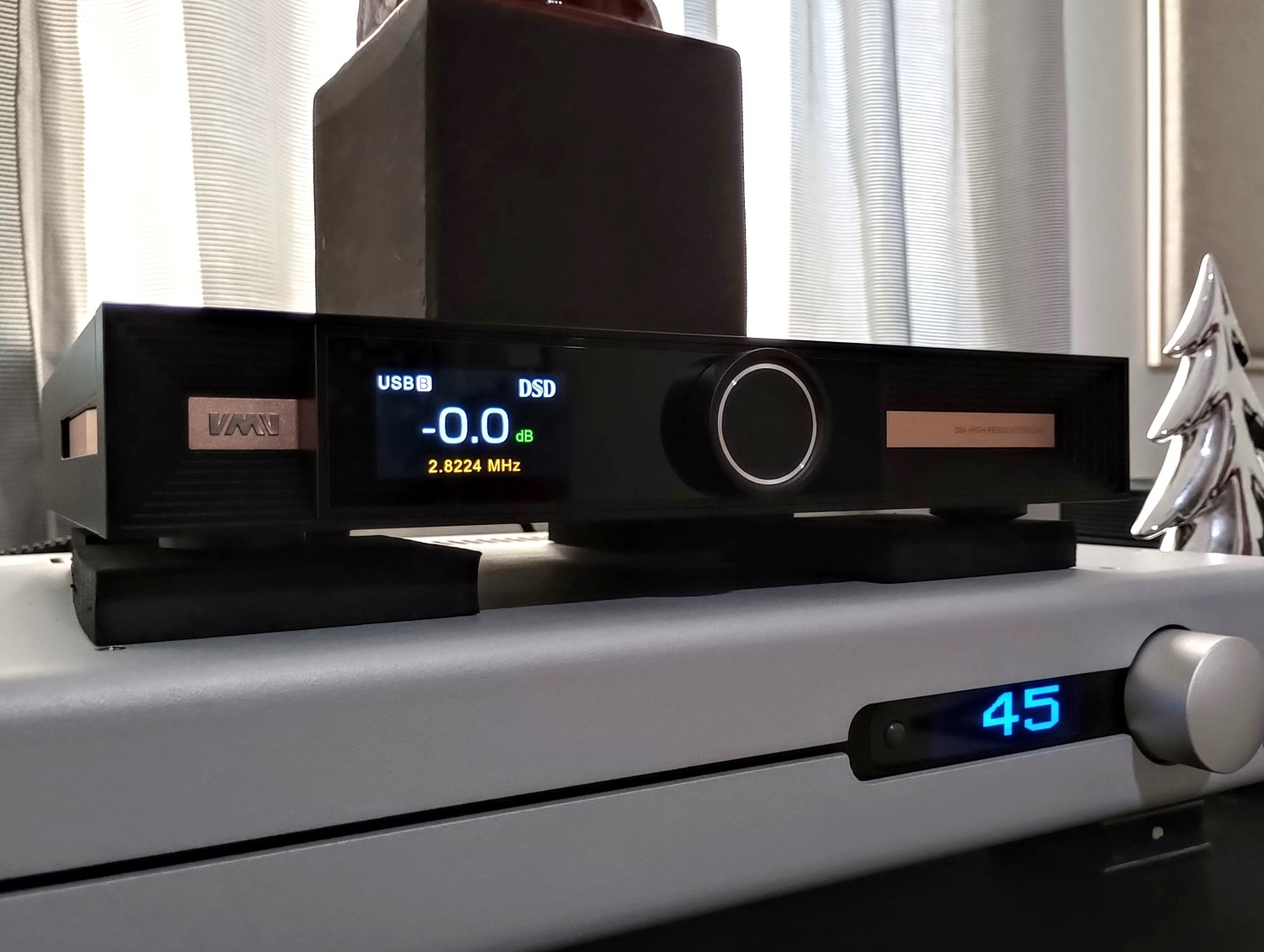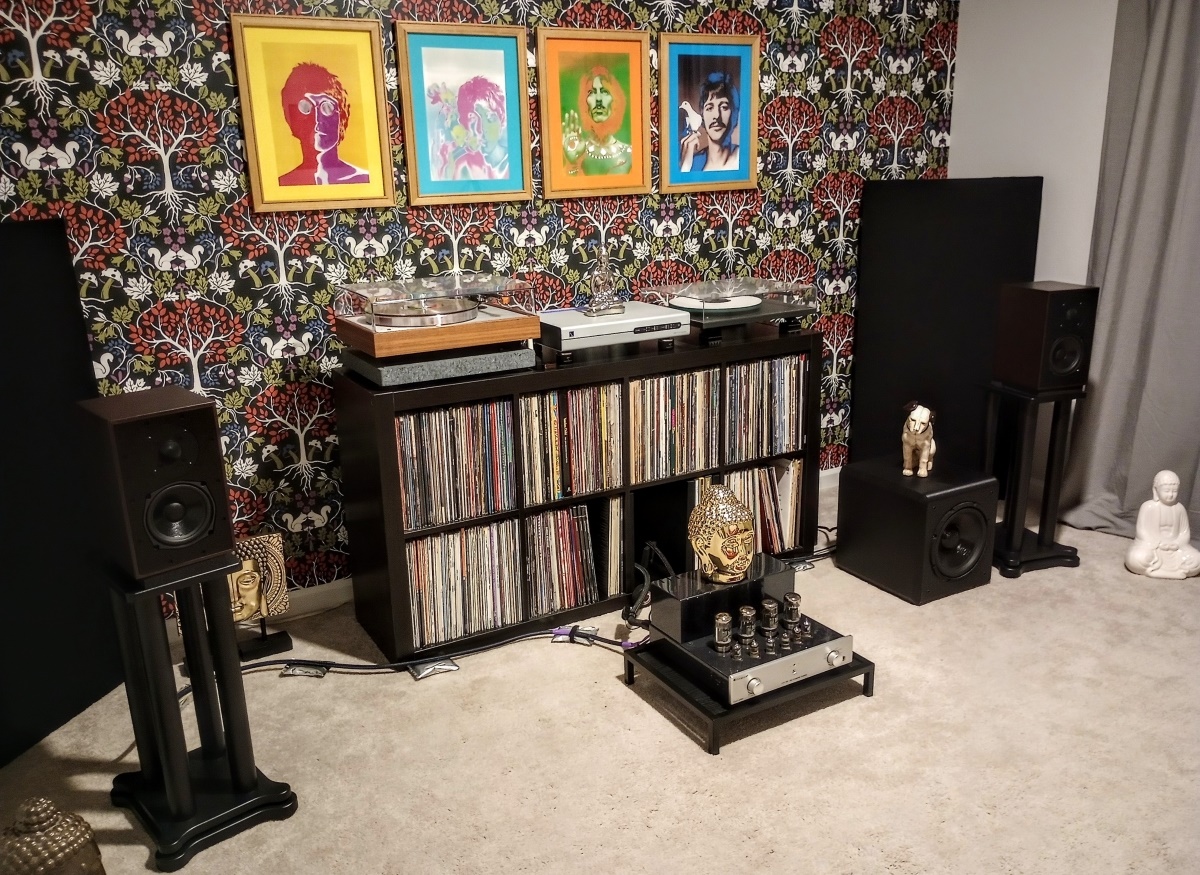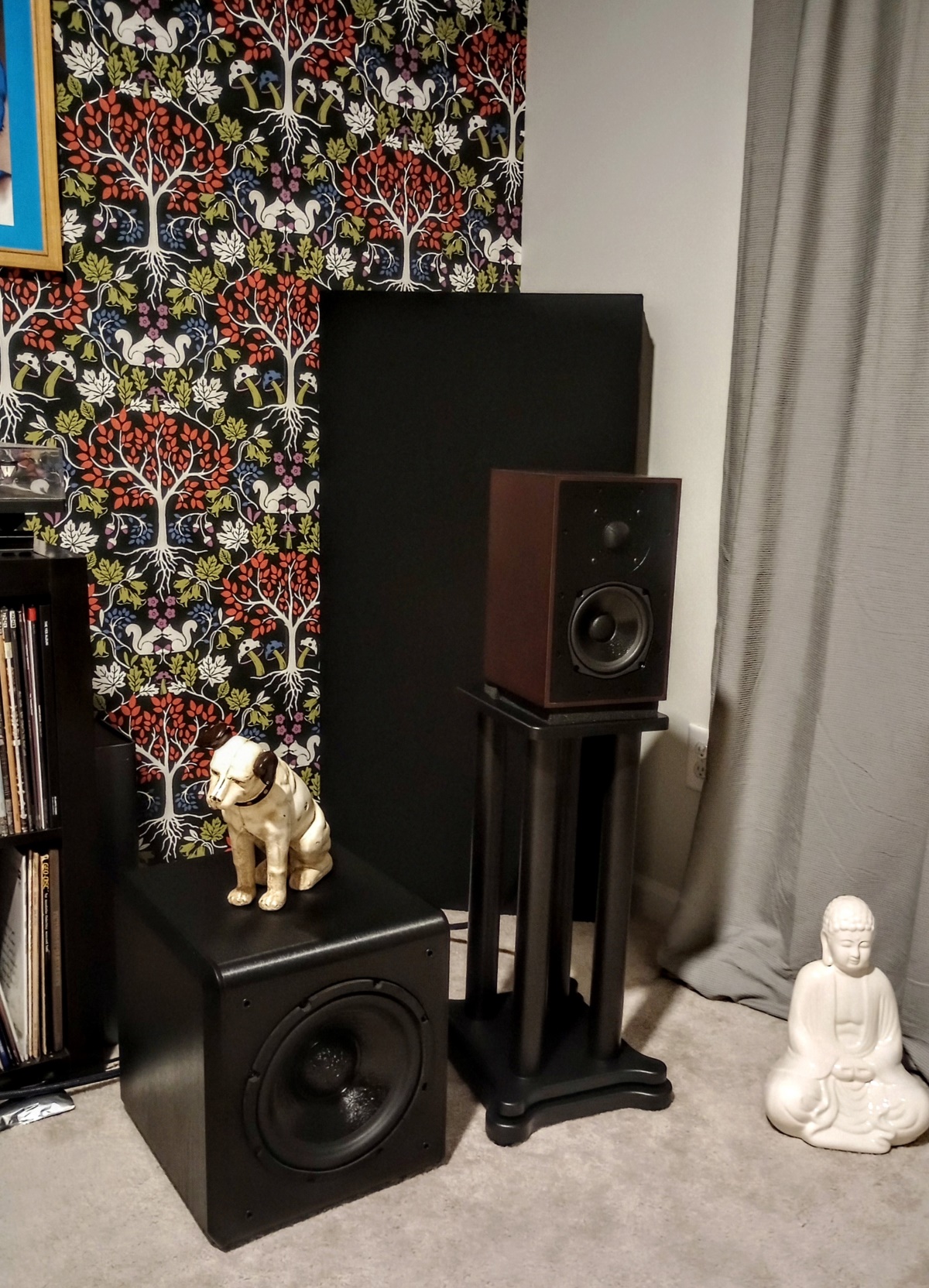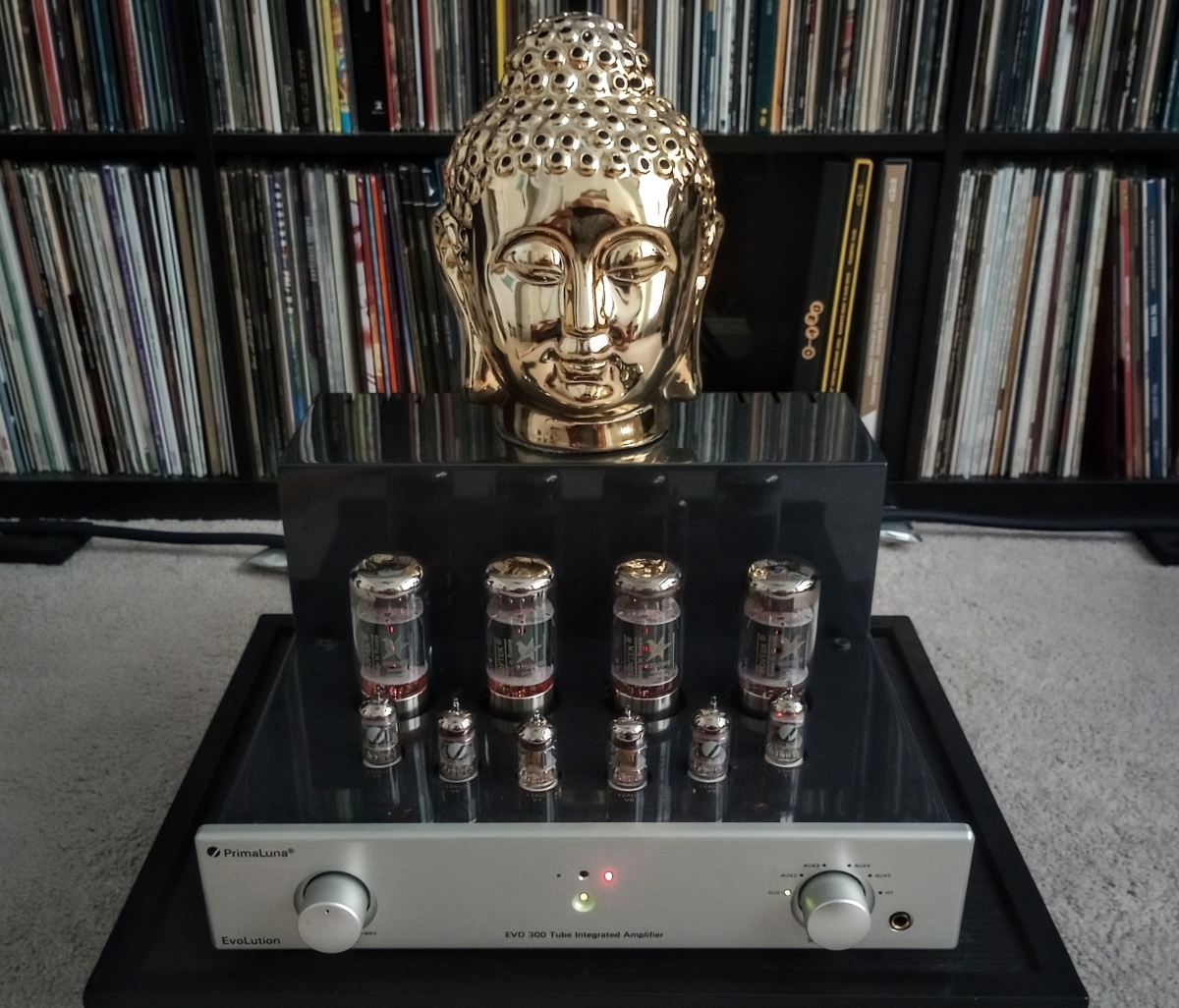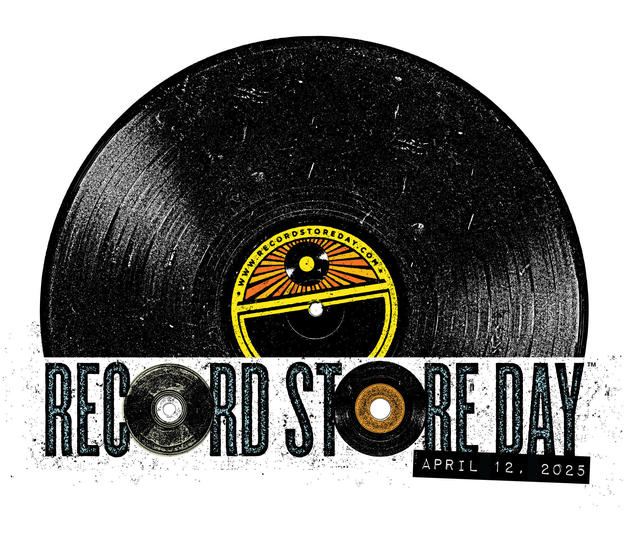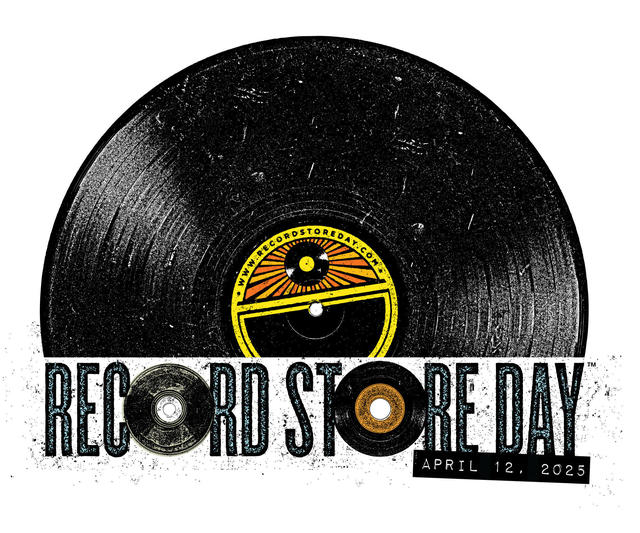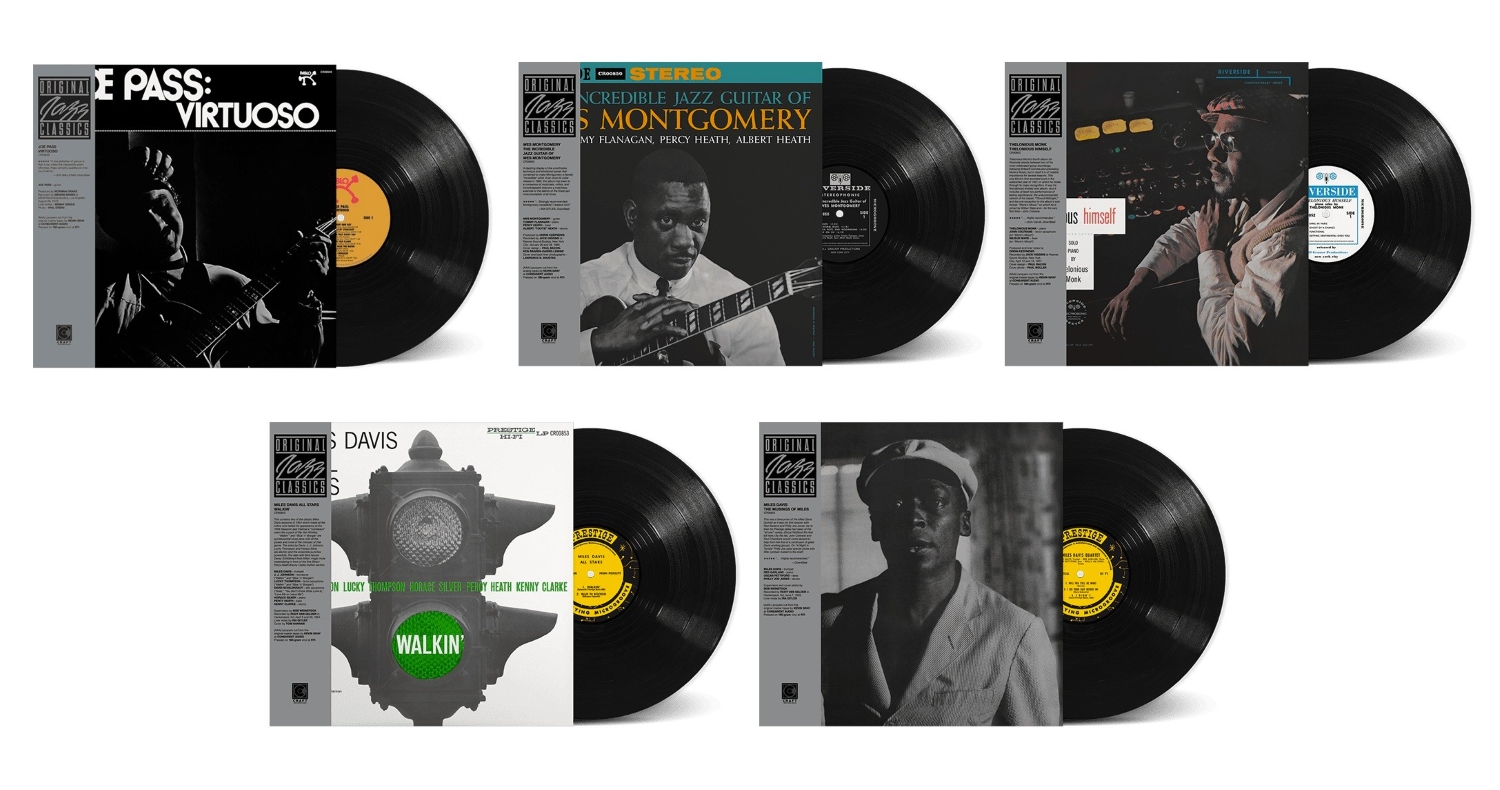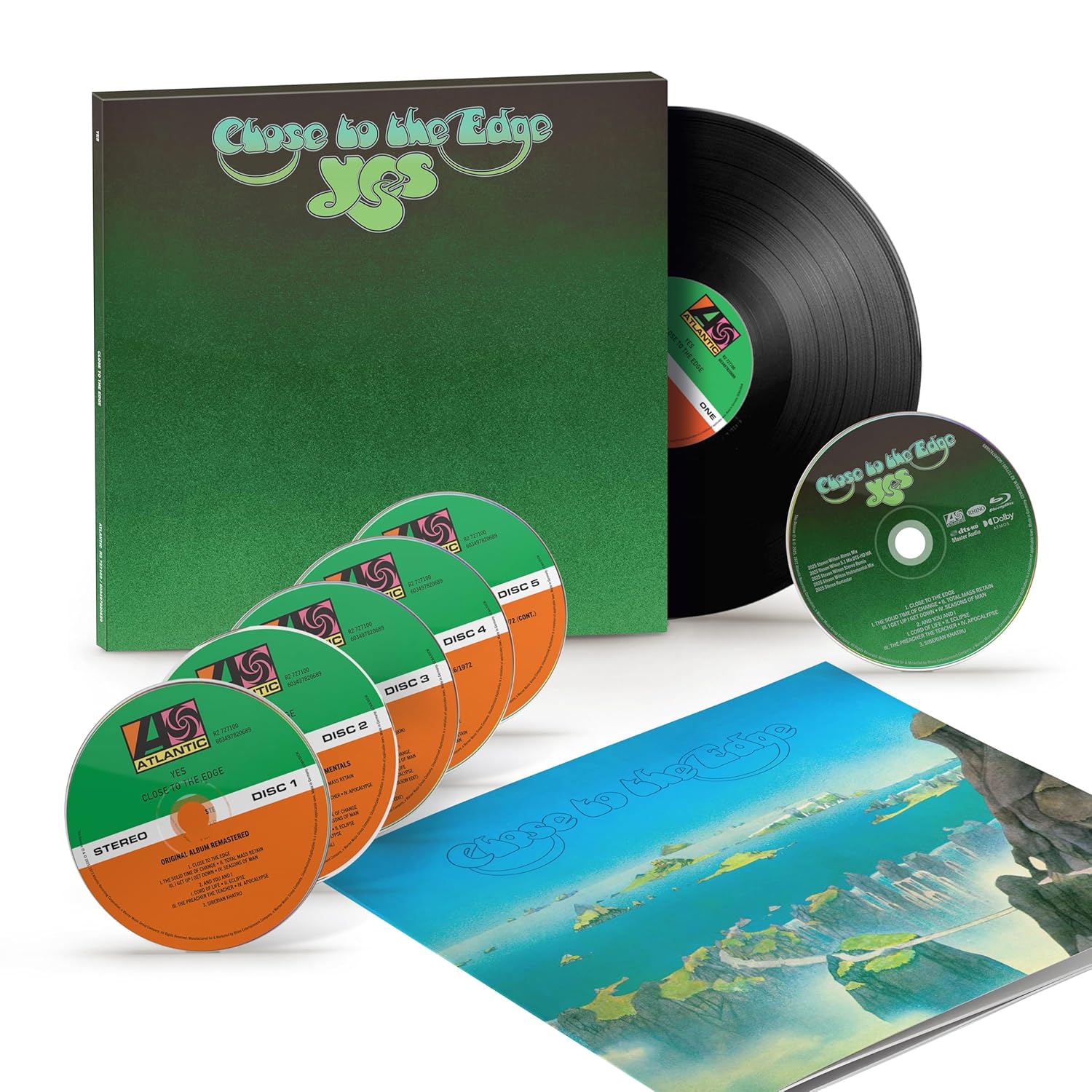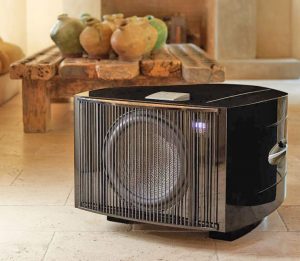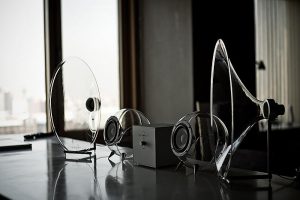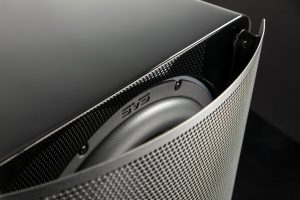Early this year, I flim-flammed Vera-Fi Audio main man Mark Schifter into sending me one of his new Vanguard Caldera 10 subwoofers. I was desperately in need of ultra-low bass following the untimely demise of my beloved REL T9, which had been a true and faithful servant for a dozen years. I honestly had no intention of getting a $199 subwoofer to do the everyday heavy lifting in either of my audio systems—I mean, seriously? But when the Caldera 10 arrived and saw daily use in my digital source system, the stars completely aligned for me, and a few months later, a near-planetary conjunction took place when the second Caldera 10 rolled in. While the relatively meager $199 price tag of the Caldera 10 seemed laughable compared to the nearly $1000 MSRP of the REL it replaced, the much less expensive sub continually impressed me with its ability to provide nearly limitless oceans of tuneful but wall-shaking bass. Surprisingly, the Caldera 10 virtually matched the dead REL's specifications in terms of its low frequency response, 200 watt Class A/B amplifier power, compact dimensions, and its ease of room placement. And after I determined the best connection scheme (speaker-level in my system) for the Caldera 10, it blended seamlessly with whichever set of main loudspeakers were currently in use, whether the Magneplanar LRS or KLH Model Fives. The fit and finish of its well-constructed cabinet was impressive for its low price point, and despite every torture test track I threw at it, the Caldera 10 was unshakeable—well, actually, it shook rather a lot!
A single Caldera 10 subwoofer in combination with the XSA Labs Vanguard compact monitors proved perfect in my analog source system!
Doubling the complement of Caldera 10 subs exponentially improved my digital source system's bass performance by smoothing out the lower octave response and enhancing my enjoyment of music from every genre. You can read my original review of the Caldera 10 subwoofer HERE, and the dual-sub configuration follow-up HERE. The ease of moving the manageably sized Caldera 10 subwoofer between rooms has allowed me to quickly Sherpa one of them back and forth between my digital and analog source systems as needed. In the analog room, it provides the missing octaves that round out the performance of the amazing XSA Lab Vanguard compact monitors that have been making glorious music there now for months. Viet Nguyen created both the XSA Vanguards and the Caldera 10, and his design acumen is on full display in this room! I couldn't imagine a more perfect subwoofer match for either system, and the especially low price point of the Caldera 10 makes getting a pair of them a complete no-brainer! You can order a Caldera 10 subwoofer (or two!) from Vera-Fi's website HERE.
The long-awaited Caldera 12 subwoofer arrives!
Mark Schifter teased for months about Vera-Fi's development of a new, more powerful subwoofer, the Caldera 12, and he messaged me a few weeks ago with a tracking number for not one, but a pair of them. Woo hoo! The Caldera 12 was also designed by Viet Nguyen, and in addition to its more robust 12-inch woofer, it's driven by a powerful 500 watt Class A/B plate amplifier that features a massive toroidal transformer. With its larger cabinet architecture and beefy driver, the Caldera 12 goes lower in the bass spectrum with a -3dB downpoint of 22Hz, reaching at least one-third octave lower than the Caldera 10. The heavily braced cabinet features the same beautiful real rosewood veneer that's featured on Vera-Fi's Vanguard Scout loudspeakers, and the fit and satin finish of the Caldera 12 is every bit as flawless. The black edgework around the front and sides gives it a very distinctive appearance, and the Rosewood finish nearly matches the mahogany-veneered KLH Model Fives that are currently occupying my digital source room. On paper, and in terms of its visual appeal, the Caldera 12 far exceeds the Caldera 10, and at a $399 price point that's still crazily affordable. As positive as my impressions of the Caldera 10 has been, how could the Caldera 12 not follow suit? You can order one (or more) from Vera-Fi's website HERE.
As young Max from Maurice Sendak's classic Where The Wild Things Are so eloquently proclaimed: "Let the wild rumpus begin!"
Setup and Listening Results
Clicking on my name in the header above will show the full complement of equipment that resides in both of my audio systems, although the pair of Caldera 12 subs were strictly used in the digital source system. That system includes a PS Audio Stellar Gain Cell preamplifier, which drives the Naiu Labs Ella power amplifier (250 wpc/8 ohms, 500 wpc/4 ohms, 1 Kilowatt/2 ohms); the Naiu Ella currently powers a pair of new production KLH Model Five loudspeakers. My current streamer/server/music player is still the dual-box Euphony Summus/Endpoint combo; it's been recently upgraded to the latest Euphony Stylus operating system that also features upsampling software from Mozzaik that transcodes all PCM files to DSD 64. The Euphony system streams the digital signal into a new S.M.S.L. VMV D2R digital to analog converter; it features an advanced Japanese-made ROHM DAC chip, the BD34301EKV, which is the most expensive DAC chip currently on the market. The S.M.S.L.'s design allows for multiple configurations of direct 1-bit DSD playback, which makes it the perfect partner for the upgraded Euphony streaming stack; a full review of the streaming system will be forthcoming on Positive Feedback. A Yamaha BD-A1060 universal disc player is available for legacy disc playback, and power conditioning is courtesy of an AudioQuest Niagara 3000 Low Z Noise Dissipation System, in combination with additional broad-spectrum noise reduction from Vera Fi's SnubWay and Main Stream devices (reviews HERE and HERE).
In my original Caldera 10 review (HERE), I had to experiment with the connection choices to determine which was the best for my desired implementation of the single and later dual subwoofers in the digital and eventually, analog systems. My connection of choice ended up being the speaker-level inputs, which mated very well with the Magneplanar LRS loudspeakers I was using at the time, and very closely matched the setup I'd been using for decades with the REL sub. Mark Schifter and I had multiple conversations regarding this; my experiences have proven to me that speaker-level connections allow sub output levels that are more unrestrained, and more closely matched to the sonic character of the main loudspeakers. A lot of people disagree on the nature of this relationship, but it's been my approach for well over a decade, and I've never experienced anything other than excellent results. That input choice worked perfectly with the Caldera 10 subs, although I did try the line-level inputs with limited success. I'm not sure if it was perhaps an impedance mismatch with my PS Audio Stellar preamplifier, but it didn't work anywhere nearly as satisfyingly as the speaker-level connection did for me.
So imagine my dismay at the initial point of connection of the Caldera 12 subs to my system when I discovered that there were no speaker-level connectors on the plate amplifier. Whaa? There's a pair of RCA jack inputs, along with a single balanced input on the plate amp—and nothing else (the knob that's used to set the crossover frequency can be fully rotated to provide an LFE connection, if desired). The PS Audio preamp has only one set of balanced outputs and only one set of single ended RCA outputs—and it has no dedicated subwoofer outputs. The conventional wisdom in a balanced system—and my digital source system is fully-balanced from end-to-end—always connects the power amplifier using the preamp's balanced outputs. Leaving the preamp's single-ended outputs for connection of a sub—or whatever else needs a level-controlled signal. When I originally connected the Caldera 10 subs to my system via the RCA inputs, the bass performance was nearly nonexistent, and sluggish at best, regardless of how far I cranked the output level knob, and only snapped into focus upon use of the speaker-level inputs.
The RCA "Y" cable worked, but not with the level of perfection I expected.
The Caldera 12 subwoofers also didn't initially respond well to the RCA inputs, giving me the same level of dissatisfaction I experienced with the original Caldera 10 connections. I started digging through boxes in my storage closet to try and track down a pair of "Y" RCA subwoofer adapters I knew were there, and connecting both left-and-right RCA inputs did help, but initially only on one sub channel. I'm pretty certain one of the adapters had a short, so I quickly ordered a new pair, and they arrived the next day. That balanced the sub levels between left and right channels, but I still wasn't getting the same level of bass output from the Caldera 12 subs as I did with the Caldera 10 subs connected to the speaker-level inputs. There are varying theories on the use of "Y" adapters—which seem to double a subwoofer's output—I've always been told that most subs with dual channel inputs have separate voice coils for left and right channels, and only by feeding both inputs do you get both voice coils active. I must have read a dozen different theories on the subject, but even with a perceived output doubling of the pair of Caldera 12 subwoofers, I still wasn't totally satisfied with the sound. Nonetheless, I continued to crank every manner of ultra subterranean bass content through them at maximum SPLs, from Kraftwerk, Depeche Mode, Yello, and Dead Can Dance to at least assist in their break-in.
Further online investigation suggested the use of a balanced XLR "Y" connector to split the balanced output from the PS Audio preamp between the Naiu Ella and the pair of Caldera 12 subs. I thoroughly researched this, and chose what I thought were the most well-constructed, pro-audio-type balanced "Y" connectors out there—that also proved to be a complete bust. I'm not saying that everyone will experience the same situation I have, and I'm sure it's a shortcoming of my system, and probably just an impedance mismatch brought to light by my PS Audio preamp's lack of additional balanced and single-ended outputs, plain and simple. As a last resort, I did what I considered to be a cardinal sin in a balanced system, and rearranged the cable connections between the subs and the Naiu Ella amplifier, using the balanced outputs of the preamp to connect the pair of Caldera 12 subs via their balanced inputs and the single-ended outputs to connect the power amp. The pair of Audio Art Copper Cryo OCC (HERE) balanced cables that I moved from the inputs of the Naiu Ella amp to the Caldera 12 balanced inputs cost almost as much as the pair of Vera-Fi subwoofers(!). Shazam!! Everything suddenly snapped into complete focus, and the Caldera 12's began to sing as I knew they probably could. Unfortunately, I was less than happy with the single-ended cable connection to the Naiu Ella, but after robbing another pair of Audio Art single-ended Copper Cryo OCC cables from the analog system, I no longer heard any negatives from having the amplifier connected using this configuration. As with my initial experiences with Audio Art Cable, any equipment connected by the Copper Cryo OCC interconnects almost instantaneously sounded more well-integrated with the system and more musically focused. Finally, the "wild rumpus" had actually begun!
The excellent Audio Art Cable Copper Cryo OCC balanced interconnect costs almost as much as the Caldera 12 subwoofer, but provided the perfect connection!
I want to be perfectly clear here—none of the connection issues that I experienced with both the Caldera 10 and 12 subs were due to any design flaws of these excellent subs, it was strictly a system-dependent mismatch between my PS Audio preamp and the Caldera subs using the single-ended connections. And while I love the sound quality of the Stellar Gain Cell preamp, it's the oldest piece of equipment currently in my rack, and I've had a few misgivings about its lack of connectivity, especially as my system has gotten more complex over the years. I would not expect most users to experience any level of difficulty in their systems while arriving at the correct connection setup with Caldera subwoofers, and based on the number of rave customer reviews on Vera-Fi's website, everyone buying Caldera 10 or 12 subs are loving them—myself included!
Four Subs are better than Two... seriously?
Facebook pal and fellow audiophile Finnbogi Sigurdur Marinosson had been following my regular online posts detailing my experiences with setting up the Caldera 12 subs. He'd already purchased a pair, along with owning another pair of REL subs, and couldn't speak highly enough about the incredible difference that having four subs made in his system. And he lobbied me regularly to do the same; simultaneously, I also started getting messages from Norman Varney of AV RoomService telling me that having four subs in my system was absolutely essential for correct bass response. While that seemed to present a logistical nightmare for me, I played about with both pairs of Caldera 10 and 12 subs and finally got them all connected and working to my satisfaction—the biggest obstacle for me was getting them all connected to conditioned AC power. With the four subs in their initial implementation in my digital source room, I was absolutely floored by the improvement in the overall bass response, and by the powerfully rendered dynamics. And especially by the fact that the four subwoofers retail for approximately the same original MSRP as the recently deceased REL T9, which price adjusted for today's dollar would cost significantly more!
About a day after I settled on the quad-sub setup, I received one of the many emails I regularly get from Upscale Audio, with this one advertising an event they were hosting that focused on stacked arrays of REL subs in their California showrooms. That definitely planted a seed—stacked arrays, huh? I was getting ready to leave for almost a week at Disney World with the grandkids, but I quickly went upstairs and started experimenting with placing the Caldera 10 subs on top of the Caldera 12s—and it worked very well, providing a number of benefits. Among them, I no longer needed additional sets of isolation footers for underneath the subs—I already had two sets of Norman Varney's large EVPs underneath the Caldera 12 subs, but had nothing underneath the Caldera 10's. Stacking the subs corrected for that—the EVPs definitely reduce interactions between the subs that sit on them and adjacent floors and walls. That said, due to the position of the stock footers on the Caldera 12 subs, the EVPs caused the stacked subs to appear somewhat out of balance, so I removed them for a few pictures I took and posted on Facebook, and would deal with a more permanent solution upon my return from the Magic Kingdom.
After juggling the footers and EVPs on the Caldera 10 and 12 subs, everything fell quickly into place.
Once back home, I removed the Caldera 12 stock footers and placed the subs back on top of the big EVPs. I then removed the stock footers from both Caldera 10 units, and replaced them with the footers I'd just removed from the Caldera 12 subs. The Caldera 12 footers were more pliable, and provided a better isolation match with the subs stacked, especially compared to the hard-plastic composite material used in the smallish footers on the Caldera 10 subs. The new arrangement worked out great, looks good (and much more professional!), and everything sounded more coherent. At this point, I proceeded to crank a nearly non-stop hit parade of every bass-heavy track I could find on my music server, and the four subs sang in perfect harmony! This also gave me an extended opportunity to double check the polarity settings of each sub, as well as fine-tune their crossover and level settings. I ended up dialing back the output levels of both sets of subs somewhat; the resulting sound was more musically appropriate and more well-integrated with the KLH Model Fives, but with the extended low frequency response of the Caldera 12 subs, I could still feel the low bass at my listening position.

I'm a firm believer that if you get well-recorded acoustic bass to replay across your system with the appropriate levels of realism, you're most of the way there, and everything else—including rock, synth, and electronic dance music with subterranean bass levels—will fall into place. I regularly use selections from Native DSD Music's DSD 512 download of Patricia Barber's album Modern Cool, including the track "Company," which is essentially a trio of instruments that features Barber's voice and some incredibly dynamic interplay between the bass, drums, and trumpet. It's very rapidly become one of my new acid tests for system bass response—it's an absolutely killer track, and Jim Anderson's recording captures the musicians with you-are-there realism. Through the new quad setup that highlights the Caldera 12 subs, I've never heard the tracks on this outstanding album sound so very alive!
I have hundreds of great tracks on a playlist I use for subwoofer evaluation; one of them is "La Habanera" from Yello's superb album One Second, where at the song's start, a large truck fires up its engine, then roars across the soundstage. With four subs, but especially with the extra oomph provided by the Caldera 12's, it's a much more visceral experience as the truck rolls by—you feel the serious need to duck out of the way as the truck rambles through your room! This is a seriously great album that's not only an entertaining listen, but will provide an incredible challenge for any system to reproduce well.
Another great set of selections comes from Depeche Mode's Enjoy The Silence maxi-single, which features a number of otherwise unreleased tracks, along with multiple extended remixes of their classic "Enjoy The Silence." As with most electronic dance music, the bass content is beyond intense, and only the most well-equipped systems will deliver the entire low-bass spectrum. That's not a problem with the four-sub Caldera setup, where Francois Kervorkian's percussion-heavy "Hands and Feet" mix is given the appropriate level of crashing metallicism, while his "Bass Line" mix vibrates the entire house. Even the EVPs can only do so much in a standard construction home when the level of airborne vibrations coming from the Caldera 10—and especially the Caldera 12—are as over-the-top as they are here!
While listening to something in a more classical vein, Mark Wigglesworth's recording of Shostakovich's Symphony No. 1 with the Netherlands Radio Philharmonic features some of the most intensely percussive passages I've yet heard in a classical recording. The second movement "Allegro-Meno Mosso" has several instances of crushing crescendos that were replayed by the four subs with such gusto that I could easily close my eyes and believe I was in the concert hall with a live orchestra. And when those percussive crashes come, not only does the entire house shake, but you can easily visualize all the drywall screws popping out of the walls and ceiling of the listening room! I essentially got much of this experience from the pair of Caldera 10 subwoofers, but with the Caldera 12 subs in the mix, the percussive nature of the music is much more visceral and dynamic. The quad of subs provide the kind of chills my usually strained wallet could never have allowed me to experience prior to their arrival!
Final Impressions
In my original review and follow-up for the Caldera 10 subs, I noted that they presented bass that was impressively deep and musically tuneful. And while a single $199 sub was surprisingly able to match the superb level of performance I'd been getting from the much more expensive REL T9 for over a decade, a pair of them handily surpassed the much more expensive sub, and with relative ease. The Caldera 10 is a shockingly good performer at a nearly entry-level price, and if your budget demands caution, a single Caldera 10 will fulfill your low bass dreams with near-perfection. For those who can step up to the new Caldera 12 sub, or perhaps even a pair—you won't believe your ears! And for the ultimate in low bass perfection, a quad of Vera-Fi subs will give you everything, and at a price point that typically might have gotten you only a single sub with high-end pretentions.
This review was supposed to focus solely on the Caldera 12 subwoofer. As with most of my recent reviews of Vera-Fi's products, they integrate with such perfect synergy, I couldn't help but talk about how well the Caldera 12 subs work in combination with the Caldera 10's. Blame Finnbogi Sigurdur Marinosson for most of this! The two sets of subs integrate so seamlessly with each other, and in turn, with the main loudspeakers, they've elevated my listening experiences to an altogether unexpected new level of goodness. Many thanks to Mark Schifter for all his assistance, and to Viet Nguyen for his brilliant designs; the Vanguard Caldera 12 subwoofers come very highly recommended!
Vanguard Caldera 12 Powered Subwoofer
Retail: $399
Vera-Fi Audio
All photos courtesy of Vera-Fi Audio and the author




